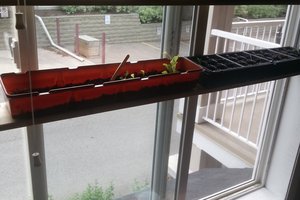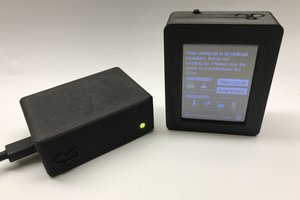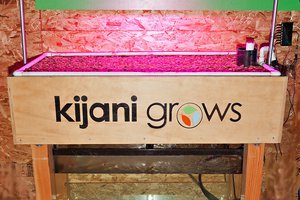Phase 1 - Initial System Design
The system will consist of a number of sensors deployed in the environment to measure such things as temperature, ph, ammonia, nitrates, nitrites, dissolved oxygen, etc as such items are deemed necessary to successfully maintain a complex aquaculture system. The test bed for this project will be a sustainable aquaponics system constructed from a series of food-grade 55 gallon plastic barrels. I am using a small aquaponics system such as this for the test bed because small changes in the characteristics of this system will likely have much more apparently results than the same size changes in a larger system.
The initial design of the sensor platform includes an ESP8266 (ESP-01) connected to one or more 1-wire waterproof temperature probes such as the DS18B20. The ESP will be running node-mcu and will be programmed to wake up at certain intervals, poll the probe(s), and submit the data to a collection server using an http-put action with an xml file. The ESP will then sleep again until the next polling cycle occurs. This should allow battery operation of the probes, although experimentation will be needed to determine battery life.
In the event that more complex sensors need more GPIO pins, or additional software complexity, an arduino unit will be coupled with the ESP, a Wifi Shield, or an Ethernet Shield (with PoE). Wireless using the ESP is preferred at this time as they are cheap and easy to replace if needed. Complex probes that may require an arduino include the ph and other selective ion probes.
Also included in this system will be the ability to manage and monitor air and water pump operation. Air pumps are required to keep the dissolved oxygen levels high enough to maintain the health of the aquatic life in the system. Water pumps are used to circulate the water from the tank through any filters to the grow beds wherein the ammonia and other particulates in the water are converted into nitrates and nitrites by bacteria. It is the nitrites that are consumed by the plant life in the system. Ultimately the water returns to the tank where the process begins again.
In an ebb and flow system, the grow beds are flooded occasionally ( the flow part of the cycle), and allowed to drain completely (the ebb). This process allows the falling water in the ebb portion of the cycle to draw oxygen into the plant roots while also supplying the ammonia and other particulates that the bacteria in the grow media convert to nitrates then to nitrites.
Phase 2 - Additional sensor development
Once the aquaponic system is established, additional sensor and control capability will be added. These additional sensors are tentatively:
1. PH sensor
2. Ammonia sensor
3. Nitrate sensor
4. Nitrite sensor
5 Dissolved Oxygen Sensor
At this time, I've not yet determined exactly how these sensors will be implemented. Options exist to implement each of these using discrete probes. However each of these probes requires periodic maintenance and calibration. I am also considering some type of spectral analysis using multiple led or semiconductor laser sources (differing wavelengths) but will have to do much more investigation before settling on a method or methods.
Phase 3 - Intelligent Greenhouse/Aquaponics measurement
Phase 3 will see the most software development. It is at this point that I plan to begin to create the intelligence in the system to automate the day to day operations. This will include adjusting PH and other values automatically, as well as feeding the aquatic life in the system.
I intend to program the system to be able to respond on its own to most issues, and if it encounters an event for which it cannot compensate or recover, to alarm the operator via several mechanism so that outside corrective action may be taken before the system collapses.

 hominidae
hominidae

 Darian Johnson
Darian Johnson